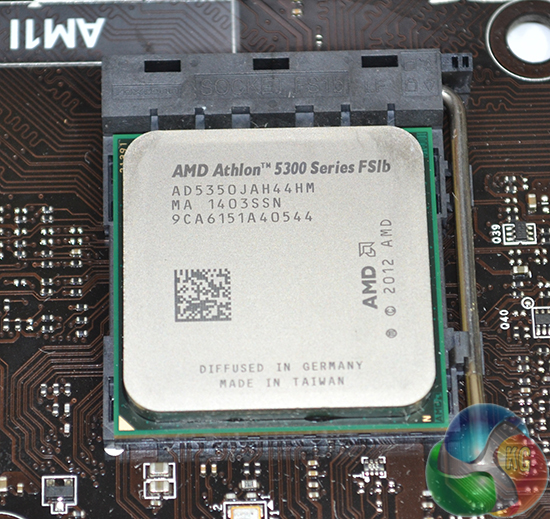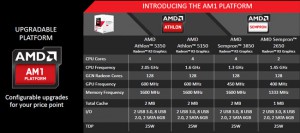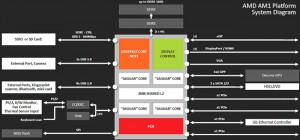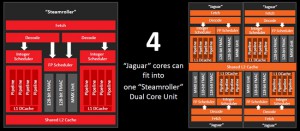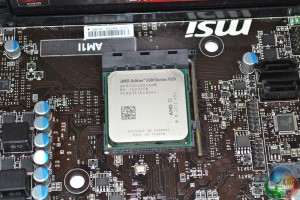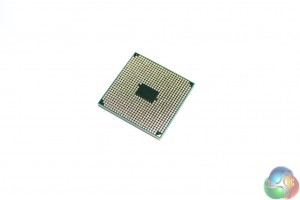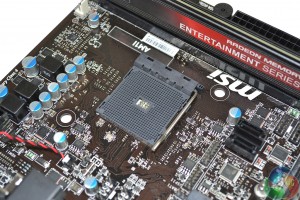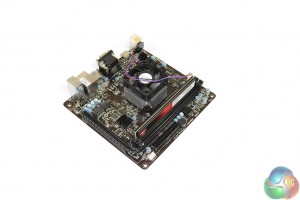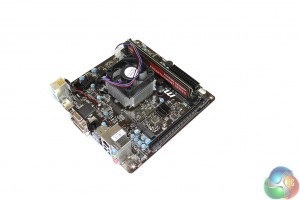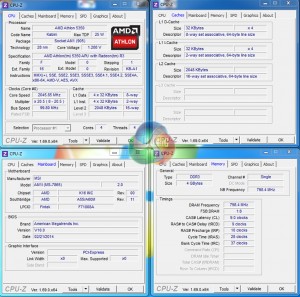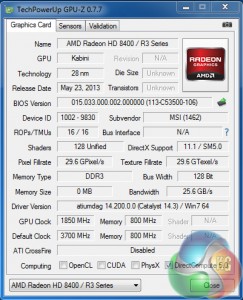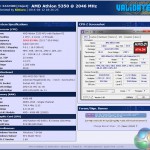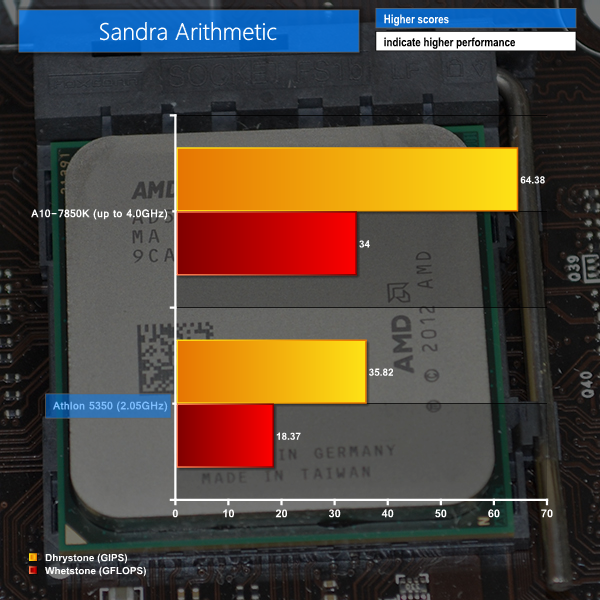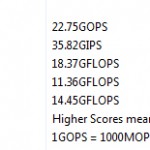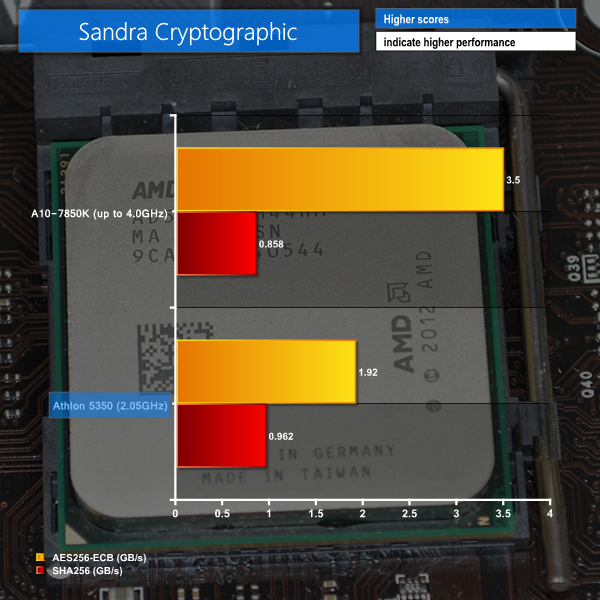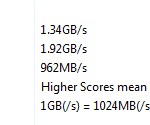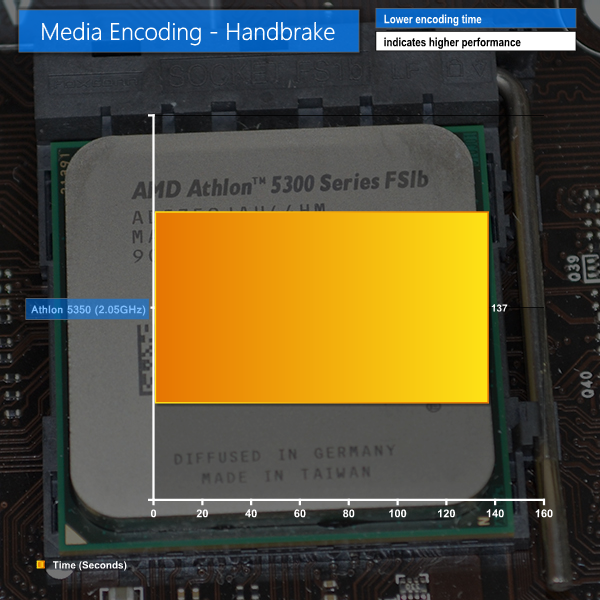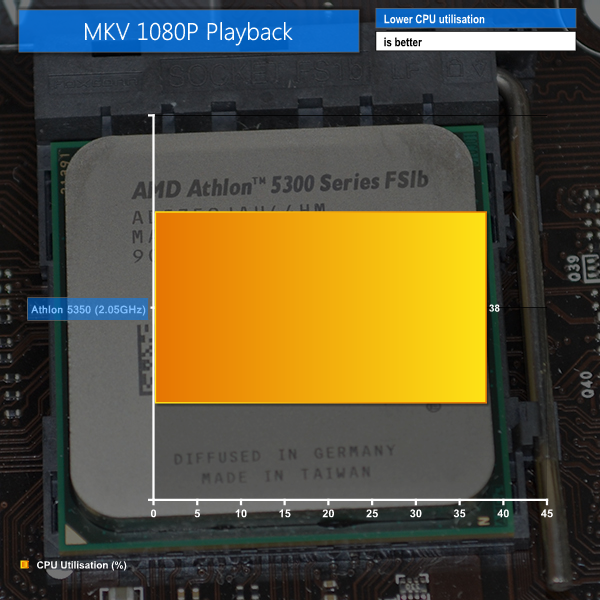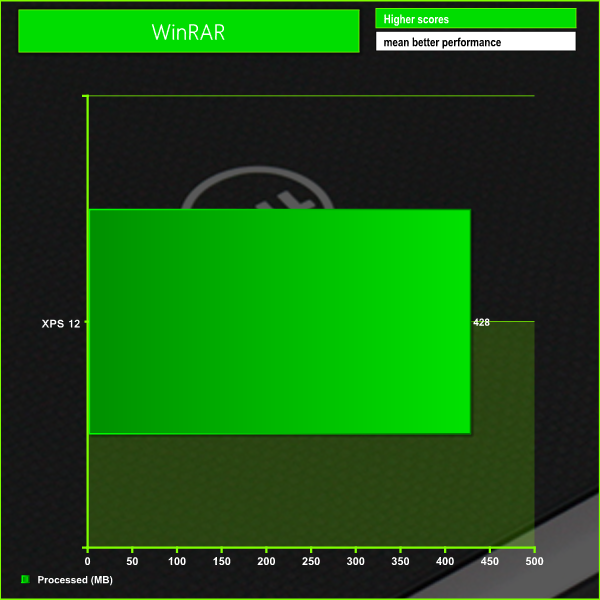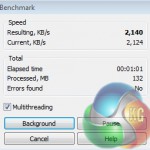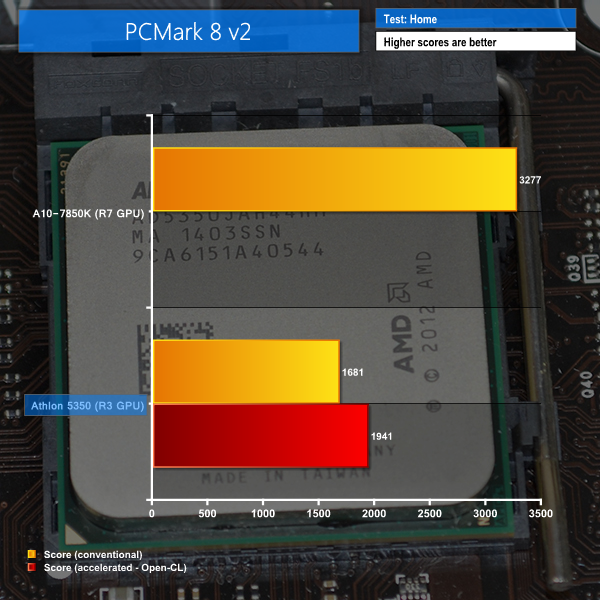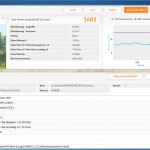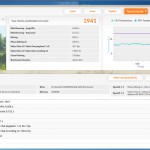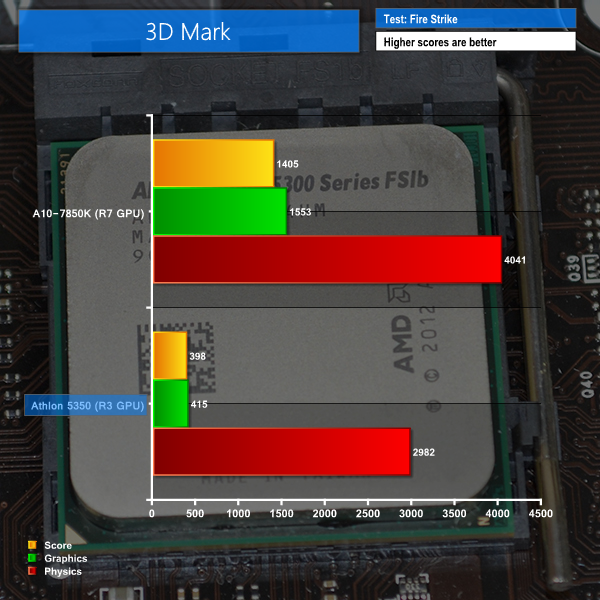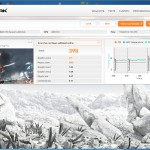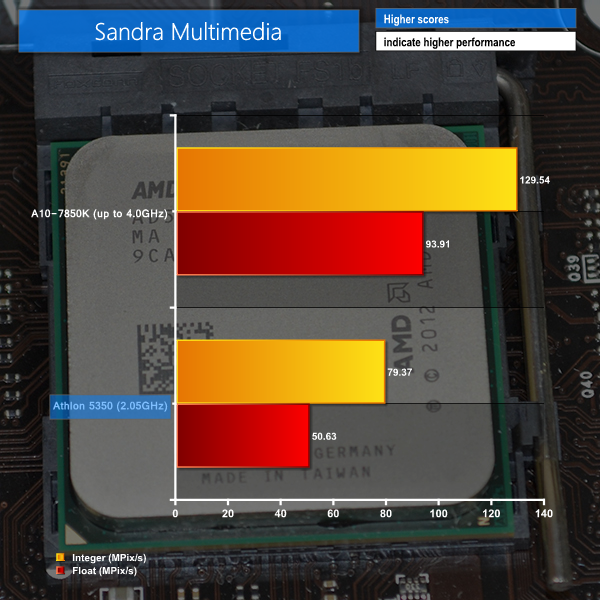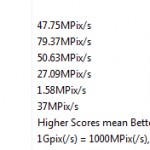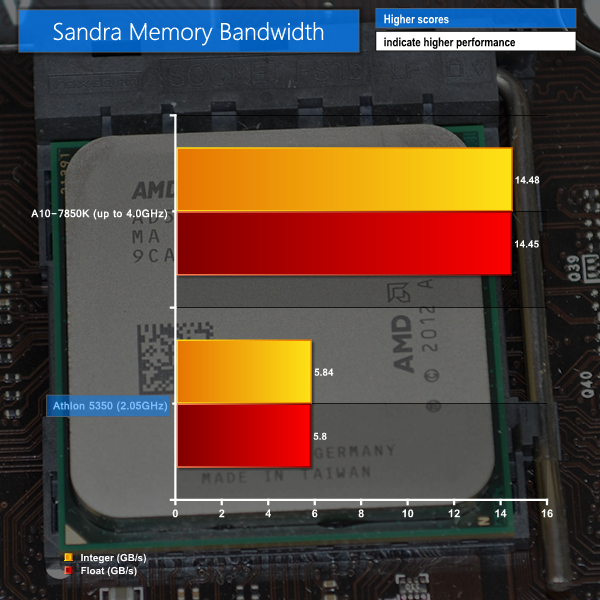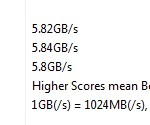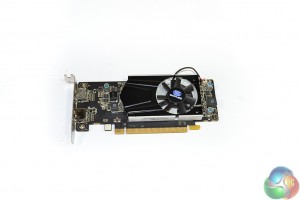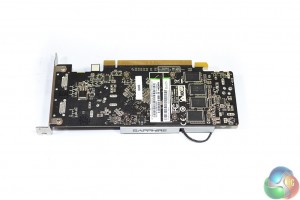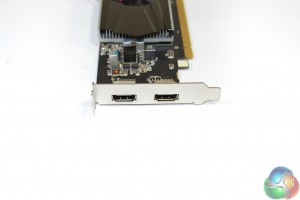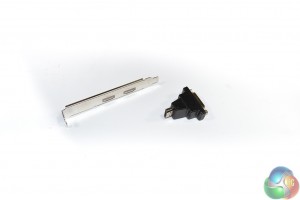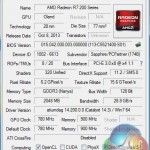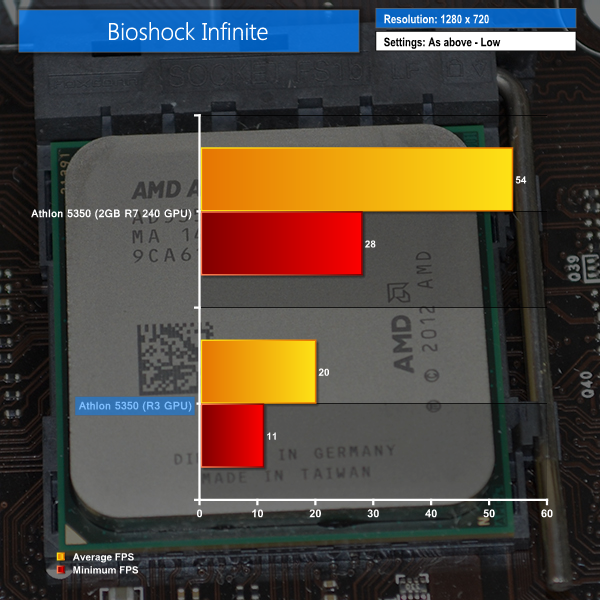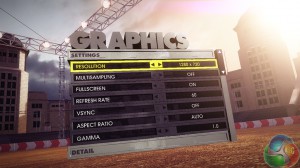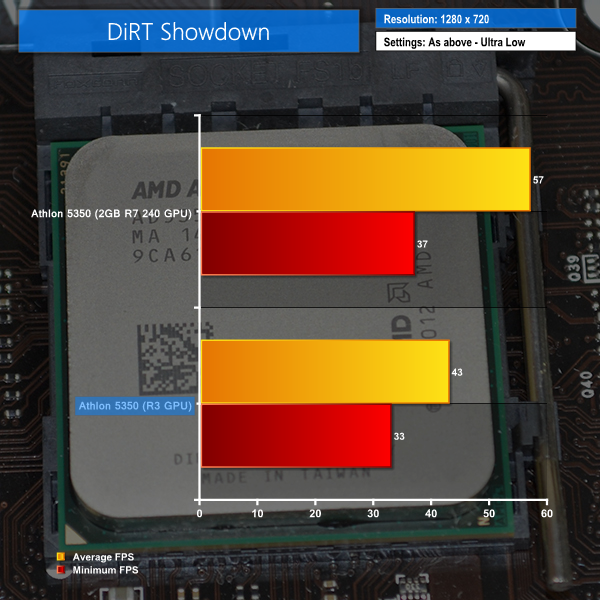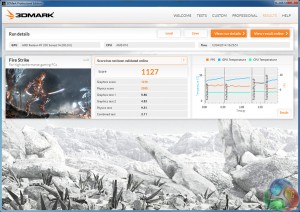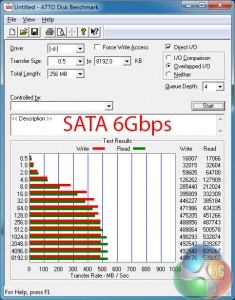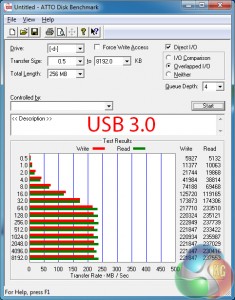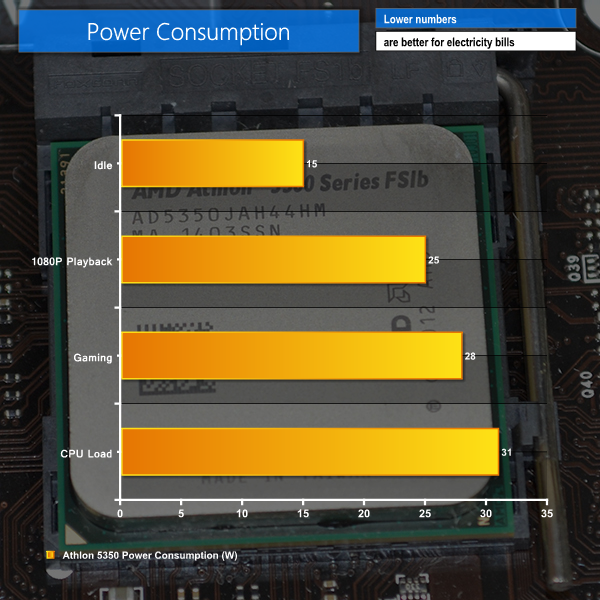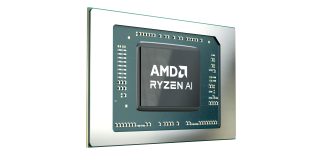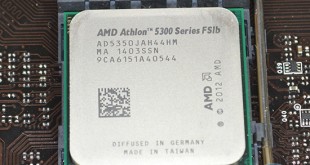
The gaming and enthusiast audiences love their big, quick, expensive powerhouse machines – there's no denying that. But the reality is that many users – about 38% of the market, in fact – in a wide span of geographical regions simply cannot afford or justify the latest-and-greatest in both CPU and GPU hardware. That's where AMD's Kabini APUs come into the picture. Shipping in up to 2.05GHz quad-core flavours and leveraging the GPU power of AMD's Radeon R3 graphics, can the Athlon and Sempron – Kabini – APUs prove that respectable performance is available for a sub-£40 fee?
Kabini has seen action in the mobile scene for a good deal of time, but AMD realised the requirement for the APUs to make an appearance on the desktop side of the divide. Entry-level chips in the desktop arena are not difficult to come by; Intel has its Bay Trail CPUs. But many of the current low-cost options share a common shortfall – the inability to be upgraded.
It's socketed 28nm Kabini where AMD aims to hit hard. Forming the AM1 platform, backed by socket FS1b motherboards, Kabini APUs give users in the entry-level scene an opportunity to buy cheap and upgrade later. And when we say ‘cheap', we mean sub-£25 cheap.
Hitting retail at less than £40, and with motherboards available for under £25, does AMD have a gem in the value department with its Kabini APUs and AM1 platform?
The Kabini APU
Most of the important information relating to the Kabini APUs and AM1 platform was covered in our ‘AMD AM1 launch – Kabini brings APU to the masses' article which can be read over here.
To check out the market positioning and reason why Kabini is being launched, follow the above link.
As of launch, Kabini is available in the form of four different APUs; a pair of Athlons and a duet of Semprons.
The most noticeable differences between the Athlon and Sempron APUs comes in the form of clock speeds. Both Athlon chips feature a higher CPU frequency than their Sempron siblings, and GPU frequency is given a noticeable boost too.
Propping up the Kabini pile is the sole dual-core chip of the bunch – the Sempron 2650. The drop in core count is minimally offset by a 150MHz CPU frequency boost, but a £26 price tag also sees AMD cutting the cache capacity by 50%, reducing GPU clock speed to 400MHz, and lowering RAM support to 1333MHz.
Each of the APUs has a clear place in the market. For example, budgeting down to the Athlon 5150, from the 5350, results in a 450MHz drop (22%) in CPU frequency with a cost saving of around £5 (12.5%).
According to AMD, Kabini is the company's ‘System in a Socket' APU. The above system diagram shows exactly what that claim means – all of the typical computing workloads and tasks, including PCIe and storage channels, are handled via the APU.
The system-on-chip (SoC) design allows motherboard vendors to keep board prices to a minimum. There's no forking out for an expensive chipset (and the under-the-hood connectivity and power links).
Kabini shouldn't be a big power guzzler, either. AMD's press slides show that Kabini's Jaguar cores require about 50% of the die space that their desktop – Steamroller – siblings dictate.
The APU that AMD is sampling for Kabini's launch is a current flagship – the Athlon 5350. On the CPU side, the Athlon 5350 features four Jaguar cores clocked in at 2.05GHz and 2MB of cache. The APU's graphics system consists of Radeon R3-level performance with the embedded GPU operating at 600MHz core frequency and sporting 128 GCN cores.
All of this CPU and GPU hardware translates into a respectable 25W TDP – a number which will grasp the attention of low-power HTPC and home server users. A TDP of 25W is not a particularly big deal, in itself. But considering that Kabini is a SoC part, 25W of power becomes a more impressive figure.
According to AMD, the Athlon 5350 APU's most relevant competitor is Intel's Pentium J2900.
The big fuss being made about Kabini is the fact that it brings a socketed SoC to the entry-level. Intel's competing models, such as the Celeron J1800/1900 and Pentium 2900, are typically found built into their motherboard, hence upgrade paths are extremely limited.
Kabini, the AM1 platform, and the FS1b socket change that. Entry-level users are given a drop-in chip that can be changed to better suit one's needs at a later date. Other sacrifices don't have to be made, either – Kabini APUs support 64-bit operating systems.
Graphics horsepower is the other key point for Kabini. Intel's competing models typically sacrifice GPU performance in favour of CPU power. This makes anything more graphically strenuous than very basic gaming a no-go. With its Radeon R3 graphics, based around 128 GCN cores, Kabini aims to make basic gaming capabilities a reality for entry-level components.
The AM1 platform
If Kabini APUs are the heart of the AM1 platform, FS1b socket motherboards are the backbone (yes, that made sense in my head). Available in mini-ITX and mATX variants from the usual vendors, current retail prices for AM1 motherboards start at less than £25.
At 25W TDP, passive cooling is certainly possible, although it may dictate a larger CPU cooler, hence limiting feasibility inside a mini-ITX chassis. Our sample made use of a basic heatsink and fan unit. The AM1 platform utilises a new mounting system which resembles Intel's push-pin mechanism. It would be fair to assume that cooling manufacturers will launch their AM1-compatible heat exchangers in the coming weeks and months.
Despite the single-channel memory support, motherboard vendors are typically implementing a pair of DIMM slots allowing up to 32GB of memory (when 16GB modules become commonplace) to be installed. Speed is capped at 1600MHz (or 1333MHz for the Sempron 2650) by virtue of the APUs' memory controllers.
So what exactly does a user get from the AM1 platform? Well, motherboard dependent, there's typically a pair of USB 3.0 ports, up to 8 USB 2.0 ports, two SATA 6Gbps connectors, Gigabit Ethernet (via a PCIe lane), and legacy connections.
Finishing off the connectivity options are up to three deployable PCIe x1 links and a PCIe x4 port that can be used to house a discrete GPU. Oh, and don't expect to take advantage of the dual-graphics (Hybrid CrossFire) solution that exists on the FM2+ platform; AMD confirmed that the AM1 platform does not support Hybrid CrossFire operation.
Display connectivity consists of DisplayPort 1.2, HDMI, DVI, and VGA links, with support for resolutions up to 4k x 2k. Up to two outputs can be utilised simultaneously. Wireless display connectivity is also provided.
AMD's Video Codec Engine (VCE) and Universal Video Decoder (UVD) offer added supports for mainstream video codecs, such as DivX and H.264.
One of the most noticeable specifications is Kabini's single-channel memory controller that tops out at a maximum of 1600MHz. Performance of the onboard GPU is directly related to the memory subsystem. Single-channel memory operating at 1600MHz could be a sizeable bottleneck.
It is currently unclear whether any motherboard vendors will offer BIOS implementations that allow for adjustments to the CPU's base frequency, hence the platform's memory speed.
CPU-Z reports the Athlon 5350 APU's core voltage as 1.288V. Under a low-load state (idle) the 28nm chip's voltage hovers around the 1.28V mark.
GPU-Z reports a number of the Radeon R3 graphics system's specifications, although the frequency readings are questionable to say the least.
CPU-Z validation can be viewed here.
AMD's Kabini parts are low-cost, low-power APU products designed to meet the needs of entry-level users. As such, we will test the Athlon 5350 APU in a number of compute benchmarks and real-world tests to outline its CPU and GPU performance, as well as the system performance of the AM1 platform.
AMD AM1 – Kabini – Test System:
- APU: AMD Athlon 5350 2.05GHz.
- Graphics: Integrated Radeon R3.
- Motherboard: MSI AM1I.
- Memory: 4GB (1x 4GB) AMD Entertainment Series 1600MHz CL9.
- CPU Cooler: Stock 1A213LQ00 CPU cooler.
- System Drive: 240GB SanDisk Extreme II SSD.
- Power Supply: be quiet! Straight Power 400W.
- Operating System: Windows 7 Professional with SP1 64-bit.
Comparison Configurations:
Unfortunately we do not have access to a Bay Trail processor to use as a comparison for the Athlon 5350 APU. As a recognisable reference point, we will be plucking data from a previous review conducted on a system powered by an AMD A10-7850K ‘Kaveri' chip.
- Falcon Computers Dead Silence Kaveri Gaming BattleRig (A10-7850K ‘Kaveri' / 8GB 2133MHz).
Settings:
- AMD 14.20 Beta8 drivers.
Software Suite:
- Cinebench R15 64 bit (CPU)
- HandBrake 0.9.9.1 (CPU)
- WinRAR 5.10 beta 2 (CPU)
- SiSoft Sandra 2014 (CPU, System, Memory)
- 3DMark (System)
- PCMark 8 v2 (System)
- DiRT Showdown (Gaming)
- Bioshock Infinite (Gaming)
- ATTO (General)
- VLC Media Player 2.1.3 (General)
Cinebench R15
We tested the chip's single- and multi-core performance using Cinebench R15. OpenGL performance was also recorded.
Unfortunately we did not have access to data for the single-core result for AMD's Kaveri A10-7850K APU.
The 2.05GHz quad-core Athlon 5350 APU delivers a respectable score in the Cinebench R15 CPU test. AMD indicated that Kabini's ‘Jaguar' cores are about 50% of the size of the ‘Steamroller' versions used in the company's Kaveri APU.
Looking at the performance numbers, the 50% size reduction seems to translate into approximately 50% of the performance. Given the target market of the Kabini APUs, that isn't such a bad result.
Cinebench's OpenGL test delivers a score of 14.24 FPS for the Kabini chip. That's less than half the typical score of a Kaveri APU, which is not surprising given the difference in GPU horsepower between the two models.
Sandra Arithmetic
The Athlon 5350 delivers just over half the performance of AMD's A10-7850K in the Sandra Arithmetic test. Put into perspective, the Athlon 5350 is a 25W part versus the 95W TDP for the A10-7850K.
Sandra Cryptographic
The Athlon 5350 delivers promising encryption and decryption performance, as proven by the Sandra Cryptographic test.
According to data gathered from the Kaveri-powered system, AMD's Athlon 5350 out-muscles the A10-7850K in the SHA-256 test. Reasons for the performance differentials could include varied memory speeds and different drive configurations between the two systems.
Media Encoding – Handbrake
We measure the time that Handbrake takes to convert our 60MB (4 minutes and 4 seconds) 1280 x 720 test file from MKV to MP4 format. Conversion priority was set to ‘High'. This is a typical task for users requiring media playback on mobile devices.
The Athlon 5350 manages to convert our 720P MKV file quicker than real-time. Averaging around 45 FPS (almost 2x speed), conversion of a hundred-minute film would be a lengthy wait.
HD (1080P) Media Playback
We measure the CPU utilisation when playing our 1080P MKV bluray rip of The Dark Knight.
CPU utilisation when playing back high bit-rate HD content hovers around 38%. With their low TDPs, Kabini parts have strong potential for usage in HTPC environments.
We initially used VLC media player but the software would provide choppy playback at certain points and GPU usage was almost idle. Using Windows Media Player with the relevant codec packages allowed for perfectly smooth playback thanks to increased emphasis on the GPU's performance.
WinRAR
WinRAR’s built in benchmark and hardware test can help us outline the archival performance offered by the Athlon 5350 APU.
Archival performance is respectable for the entry-level APU. A WinRAR resulting speed of 2,140KB/s is likely to be sufficient for many general tasks where the archive sizes do not extend to many Gigabytes of data.
As a point of reference, the A10-6800K ‘Richland' APU delivers a speed of around 4,000KB/s.
PCMark 8 v2
We test using the conventional test and the OpenCL-accelerated benchmark built into PCMark 8 v2.
Unfortunately we did not have access to data for the OpenCL-accelerated result for AMD's Kaveri A10-7850K APU.
The performance trend for Kabini's Athlon 5350, in comparison to the Kaveri flagship, continues. PCMark 8 v2 shows that the Athlon 5350 delivers roughly 50% of the general-usage performance of the A10-7850K.
A 15% performance boost is registered when running PCMark 8 v2's accelerated test. The test leverages the OpenCL power of Kabini's 128 GCN cores.
3DMark
We used 3DMark's ‘Fire Strike’ benchmark which is designed to test the gaming performance of PCs. We opted for the Normal setting, NOT the Extreme mode.
3DMark's graphics-heavy workload is where the relative performance of Kabini's R3 graphics system is shown. Users expecting discrete-level graphics performance from the Athlon 5350's GPU will realise that comparison graphics cards will sit in the market's entry-level segment. Unsurprisingly, Kaveri's R7 GPU is substantially more powerful.
Physics performance of the Athlon APU is strong. AMD's flagship Kaveri APU is able to offer 36% higher performance than Kabini's Athlon 5350 but costs around three times as much.
Sandra Multimedia
The Sandra Multimedia results provide numerical reasoning as to why the Kabini flagship is a capable APU for use in a media playback environment.
Sandra Memory Bandwidth
Memory bandwidth is where the Kabini APUs start to splutter. With the AM1 platform limited to single-channel 1600MHz memory, it is no surprise that memory bandwidth is lacking in comparison to higher-frequency, dual-channel configurations.
Performance of the on-chip graphics system is closely related to the performance of the platform's memory subsystem.
AMD has been shouting about Kabini’s potential as an APU for basic gaming needs. Across the Kabini range, the on-chip Radeon R3 graphics system sports 128 GCN cores and shares a portion of the system memory.
We test Kabini’s gaming ability at 1280 x 720 and low settings. This represents a basic gaming workload that many entry-level users would be happy to settle for. Less-demanding titles, such as Indie games and the likes of Minecraft, will possess lower GPU requirements and will therefore provide playable frame rates at higher resolutions or image quality settings.
While Kabini is an entry-level range, there has been a lot of interest in the possibility of using the typically quad-core chips as the foundation for a low-cost, high-resolution gaming system. Such requirements would necessitate an upgraded graphics card so we use Sapphire’s 2GB R7 240 Low Profile in combination with the Athlon 5350.
The Sapphire R7 240 Low Profile is a 2GB graphics card operating at a 730MHz core clock which boosts up to a maximum of 780MHz. The 2GB of DDR3 memory is clocked at an effective 1800MHz and uses a 128-bit wide interface.
Crammed onto the 28nm R7 240 GPU are 320 GCN cores that draw less than a PCIe slot-worth of power. Mantle is supported by the R7 240 GPU thanks to its GCN cores.
Sapphire’s unique claim for the R7 240 Low Profile is its pair of HDMI ports. Both of the ports support the usual HDMI benefits, such as; Deep Color, stereoscopic 3D, and high resolutions. Sapphire was keen to point out an interesting feature for its R7 240 Low Profile – the ability to output audio via HDMI to two separate devices. X Factor on the big screen (to keep the other-half happy, of course) and gaming on the desk-mounted monitor, anybody?
An HDMI to single-link DVI adapter is included in the bundle, as is a full-width PCIe slot bracket. A single-slot cooler and miniature fan are used to cool the relatively low-power R7 240 GPU. Dabs currently has the Sapphire graphics card priced at around £60.
Many people will quickly question the point in buying Kabini if a discrete GPU is going to be used. There are a number of situations where I can see this type of scenario occurring. To entry-level consumers, a block of funds capable of purchasing multiple pieces of hardware may be difficult to come by. Kabini allows users to leverage the gaming performance of the on-chip GPU until an upgraded discrete graphics card can be afforded.
Stretching my mind back to my early teenage years when I was building my first system, lumps of cash were difficult to come by. I realised that I could purchase the processor and motherboard at a specific time and then wait a few months before buying a higher-performance graphics card. I did not want to sacrifice playable gaming performance for those few months hence an APU such as Kabini would have been a relevant solution (if it was around at that time).
Bioshock Infinite
We used the Bioshock Infinite's ‘Low’ setting and a 1280 x 720 resolution to push today’s hardware. Our data was recorded using a section of the game, not the built-in benchmark.
At the lowest image quality settings and with a 1280 x 720, Bioshock Infinite is unplayable on the Athlon 5350-powered system. There's no denying that the level of performance offered by the R3 graphics system is respectable, but a resolution decrease would be required to provide playable frame rates.
Achieving strong frame rates with a 2GB Sapphire R7 240 graphics card added into the system proves that the Athlon 5350's CPU performance is sufficient for basic gaming tasks. Cranking the resolution up to 1920 x 1080 also resulted in borderline playable frame rates (just shy of 30 FPS), further proving that the Athlon 5350 can be used for gaming with low image quality settings.
CPU bottlenecking did not show its ugly head; there was a noticeable change in frame rates when switching from a resolution of 720 to 1080.
DiRT Showdown
We used a 1280 x 720 resolution and DiRT Showdown's built-in benchmark set to ‘Ultra Low’ quality to check if the Athlon 5350 APU was capable of providing playable frame rates in a less-demanding game.
At a resolution of 1280 x 720 and with the lowest image quality settings, DiRT Showdown is perfectly playable on the Athlon 5350-based system. The Radeon R3 graphics keep DiRT Showdown chugging away at more than 30 FPS.
Adding the 2GB Sapphire R7 240 graphics card into the mix does provide a decent bump in frame rates. Further testing showed that switching up to a 1920 x 1080 resolution with the discrete graphics card being used resulted in CPU-limited performance. An increase in the resolution did not change the recorded frame rates hence the entry-level Athlon 5350's CPU performance is acting as a bottleneck.
3DMark (with 2GB Sapphire R7 240 Low Profile graphics card)
A considerable boost in the 3DMark Fire Strike score is achieved when the Sapphire R7 240 Low Profile graphics card is added into the system. Graphics score increased almost three-fold and the overall 3DMark result was almost four-times higher.
Noise and temperatures were not issues with the Sapphire graphics card; the miniature fan was not audible over the reference AMD heatsink, and the single-slot cooler did a good job at keeping the GPU temperature below 50C while gaming.
For SATA 6Gbps testing we use a Kingston HyperX (SF-2281) SSD. We tested USB 3.0 performance using the same Kingston HyperX SSD connected to a SATA 6Gbps to USB 3.0 adapter powered by an ASMedia ASM1053 controller.
SATA
Full-blooded SATA 6Gbps performance is an important parameter for the AM1 platform. Intel's competing configuration is limited to SATA 3Gbps connections.
To users considering the AM1 platform for a low-powered storage system, the SATA 6Gbps support could be a deciding factor, even if its full performance is not yet reached by high-capacity storage drives.
USB 3.0
Support for two USB 3.0 ports is another key selling point for the AM1 platform. The Intel competition typically provides a single USB 3.0 connection.
Speed of the Kabini-provided USB 3.0 ports is likely to be sufficient for entry-level users. The connections are not as fast as those used on mainstream platforms, but they are perfectly adequate for fast transfers between external HDD-based storage.
We measured the idle temperatures and power consumption levels with the system resting at the Windows 7 desktop.
The temperature of the Kabini CPU cores and power consumption of our entire test system (at the wall) is measured while loading only the CPU using Prime95′s Small FFTs setting.
As a more accurate interpretation of real-world performance, we also record power consumption and temperature readings while running Bioshock Infinite for 10 minutes and during a 10-minute run of 1080P media.
Power Consumption
System-wide power consumption numbers for the AM1 platform are impressive. Idling at just 15W, our entire AM1 test system uses not much more power than a typical light bulb. The highest energy usage that we measured was 31W.
Power consumption numbers do not necessarily scale heavily with load, either. Going from 1080P media playback to a stretching gaming run only results in a 3W (12%) increase in power consumption.
Temperatures
Note: AMD's inaccurate GPU/CPU temperature sensors are clearly displaying incorrect readings. The temperature difference between each usage scenario is the only parameter that is worth considering.
Temperature recordings were taken on an open bench, not inside a chassis. Ambient temperature was a toasty 24°C which, in some ways, compensates for the open-air test environment.
As already pointed out, the CPU/GPU temperature readings are incorrect due to AMD's inaccurate sensors.
Assuming that the temperature sensors' error is constant (and not a function of the actual or recorded temperature), going from an idle state to 1080P playback increases the CPU/GPU temperature by 6°C. Full CPU load results in a 16°C temperature rise over the idle state.
Although sensor inaccuracies make the results difficult to interpret, AMD's Athlon 5350 does not seem to be a difficult chip to cool. I would wager that many small-sized passive solutions will cool the chip without resulting in any temperature-related issues.
In Kabini, AMD has a solid entry-level APU which tends to the needs of budget-constricted markets. Let's not get ahead of ourselves; Kabini APUs aren't going to break any speed or performance records. But they do offer a low-cost route onto the reasonable AM1 platform while offering decent all-round performance in a number of common workloads.
Performance on the CPU-side of Kabini is reasonable for the usage scenarios of entry-level users. The Jaguar cores are about 50% of the size of Kaveri's Steamroller cores and the Athlon 5350's clock speed is more-or-less 50% of the A10-7850K's. Unsurprisingly that translates the Athlon 5350's CPU performance into roughly 50% of Kaveri's in a number of tests and benchmarks.
GPU performance is where the 25W Kabini APU shows its worth. Sporting a Radeon R3 graphics system with 128 GCN cores across the Kabini range, playing less-demanding games at reduced image quality settings and a 1280 x 720 resolution is a task that the entry-level APUs are able to handle. OpenCL performance is also boosted by the comparatively strong on-chip GPU.
With its system-on-chip design, the real spice of AMD's AM1 platform is brought to the party by the Kabini APUs. SATA 6Gbps, two USB 3.0 ports, support for a discrete GPU, and four spare PCIe x1 lanes are just some of the features that make the platform an intriguing entry-level proposition. Could we see any motherboard manufacturers daring enough to make a feature-heavy board with added controllers and a pumped-up set of components?
MSI added a mini-PCIe connector to its AM1I board, while ASRock has an option with four SATA 6Gbps ports. Those two additions alone outline the AM1 platform's potential as a low-power media server. And the general compute performance of the 25W Kabini chip makes an AM1-based HTPC a tempting proposition.
Price is a key factor for the allure of the Kabini APUs and the AM1 platform. With APUs starting at less than £25 and the flagship retailing for £40, the 28nm Kabini chips offer a low-cost route onto the upgradeable DIY scene. The SoC design also helps keep motherboard prices cheap – mini-ITX and mATX parts are available for less than £25.
Overall, I see AMD's Kabini APUs as a good thing for the desktop market. They provide entry-level users with low-cost access to the build-it-yourself scene without the upgrade limitations of a non-socketed platform. And with a potential board-and-chip cost of less than £55, the AM1 platform offers an uncharacteristic number of features which could tempt users looking for a low-cost system or a secondary machine for dedicated usage scenarios.
Discuss on our Facebook page, over HERE.
Pros:
- Low-cost APUs and motherboards.
- Good range of on-chip features – SATA 6Gbps, USB 3.0, 4k resolution support.
- Low power consumption.
- Strong GPU performance for an entry-level chip.
- Efficient CPU performance from Jaguar cores.
Cons:
- Single-channel memory can limit GPU performance.
- Upgrade route is currently limited – although that will change over time.
KitGuru says: AMD's Athlon 5350 and other Kabini APUs offer an appealing foundation to the low-cost, upgradeable AM1 platform.
 KitGuru KitGuru.net – Tech News | Hardware News | Hardware Reviews | IOS | Mobile | Gaming | Graphics Cards
KitGuru KitGuru.net – Tech News | Hardware News | Hardware Reviews | IOS | Mobile | Gaming | Graphics Cards


